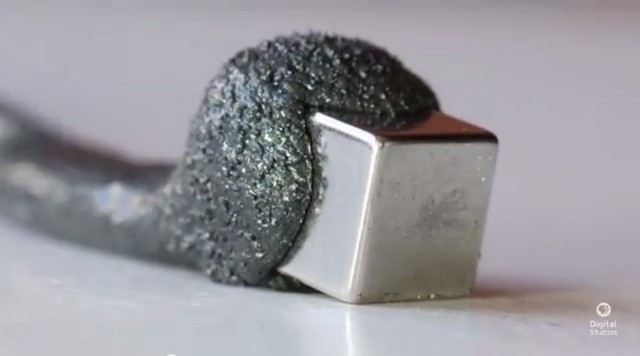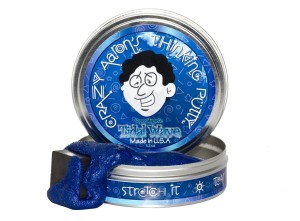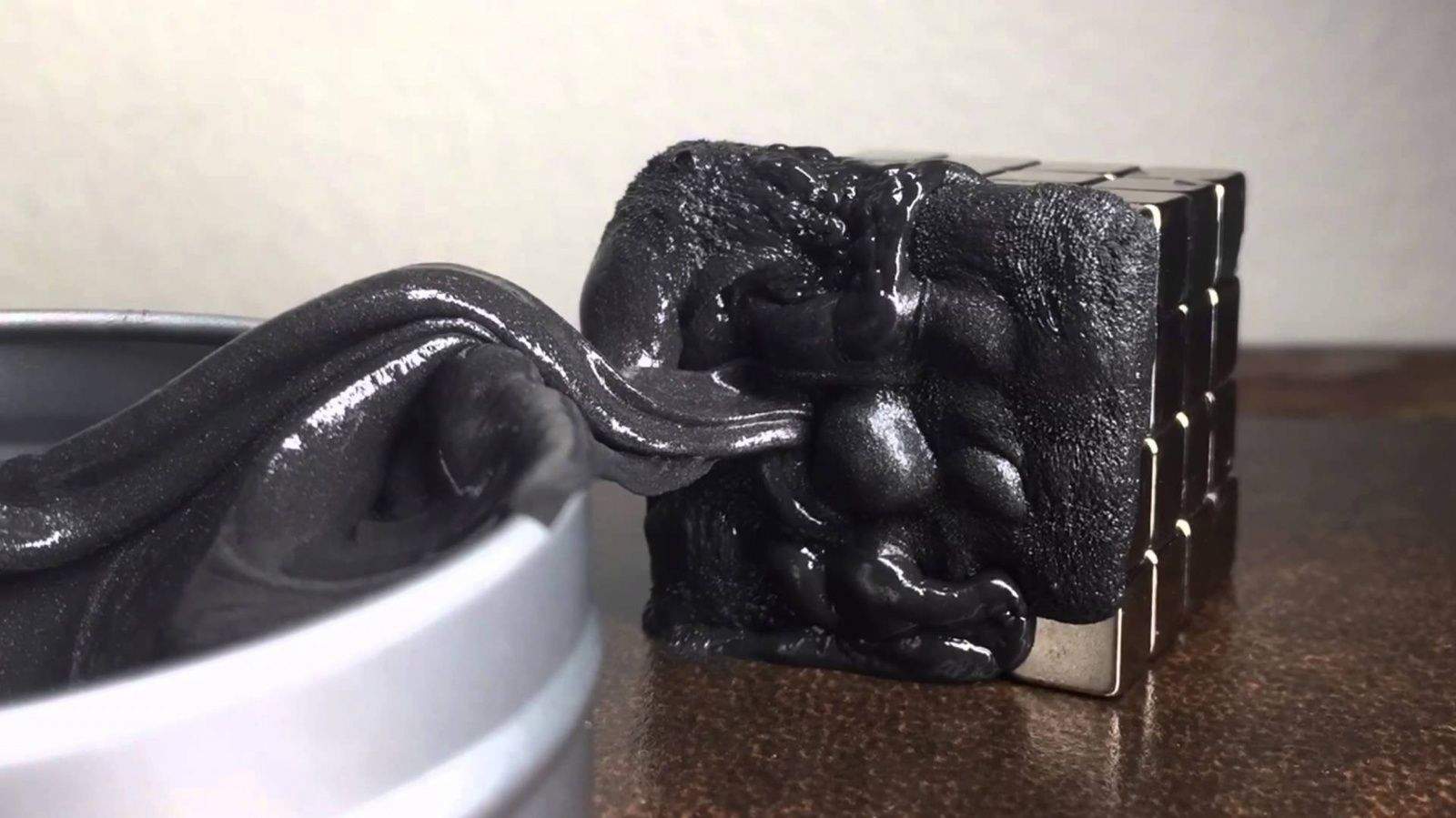Aaron Muderick is grateful to the anonymous pioneering office worker who thought to populate his or her desk with toys.
Muderick was a software engineer when his go-to desk toy, Silly Putty, gave him a whole new career when the tech bubble burst in the late 1990s and the company that employed him went under.
The story behind the unique beginnings of “Crazy Aaron’s Thinking Putty” is even crazier than the chemistry that creates the luminescent and magnetic properties of his product.

You’ve seen his magnetic putty in the many videos that populate YouTube. The videos, like those below, show what looks like a metallic lava flow enveloping some sort of magnet. Many are done in sped-up time-lapse and are reminiscent of the powerful features of the liquid metal cyborg in Terminator 2.
The computer guy is now a mechanical engineer and creative chemist. Like writing software, putty chemistry is highly technical and there are many variables to work through.
“On the minus side, the chemistry doesn’t care whether you want it to work or not,” said Muderick, 39. “With computers, you can create your own environment. On the plus side, once you get the chemistry down, it works forever. There’s not someone upstairs recreating the operating system every nine months.”
In a factory outside of Pennsylvania, Muderick employs some 600 people, making tons and tons of putty each year and packing it in four-inch tins. This is not the beige stuff in the plastic egg.

The Super Magnetic putties contain micron-sized micro magnets and come to life when it is around a magnet. The magnet charges the putty, then, as it develops magnetic poles, the putty repels. After a few seconds, it is attracted again and moves toward the magnet. The magnetic putties come in blue, black, silver and raspberry red.
The Super Illusion putties come in three luminescent colors that shift depending on the angle of light. The Phantom putties react to ultraviolet rays and can be drawn or written on with a backlight keychain that come with these putties.
There is also a crystal clear putty, putties that change color with heat and glow-in-the-dark putties. Prices for the putty range between $9 and $15 and if you’re not sure what to do with the stuff, Crazy Aaron provides tips and video tutorials on a tricks page.
“It’s sold as a toy product and there are schools that have banned it,” said Muderick, who credits his Putty World success to thinking like a kid “Once you get been banned, you know you’ve made it.”
Back when the path to “making it” involved computer coding, Muderick would arrive at work to a mysterious phenomenon. The half dozen balls of silly putty on his desk were getting smaller and smaller.
He discovered his office mates were cadging bits of the putty to play with at their desks.
“It completely changed the office culture,” he said. “We all went in on five pounds, then it was 100 pounds.”
Muderick bought a bouncing putty from a chemical company and was selling it from under his desk. On top of his desk was a scale and bags, and people could purchase their favorite colors, which Muderick was mixing in his basement.
When the software company folded, everyone eventually found work again but were scattered around Pennsylvania. His former co-workers were clamoring for putty and so were their new office mates.
“I had all these putty requests and for a while, I selling it out of the trunk of my car in parking lots at lunch time,” he said. “It was a great way to see that viral putty love.”
The game changer for Muderick came when he added a common black artists pigment to the putty. The black powder contained iron oxide and Muderick noticed that it gave the putty magnetic properties.
Crazy Aaron’s Putty World was born in 2001 and soon moved from his basement to a manufacturing facility. It was initially sold only on the Crazy Aaron website, but it is now in hundreds of stores nationwide.
The Crazy Aaron nickname came from those days of selling the putty out of his car. Now he says he is only crazy between the hours of 9 and 5. His wife and chief putty officer would beg to differ, he said.
https://youtu.be/DBrkHgpTBA4


